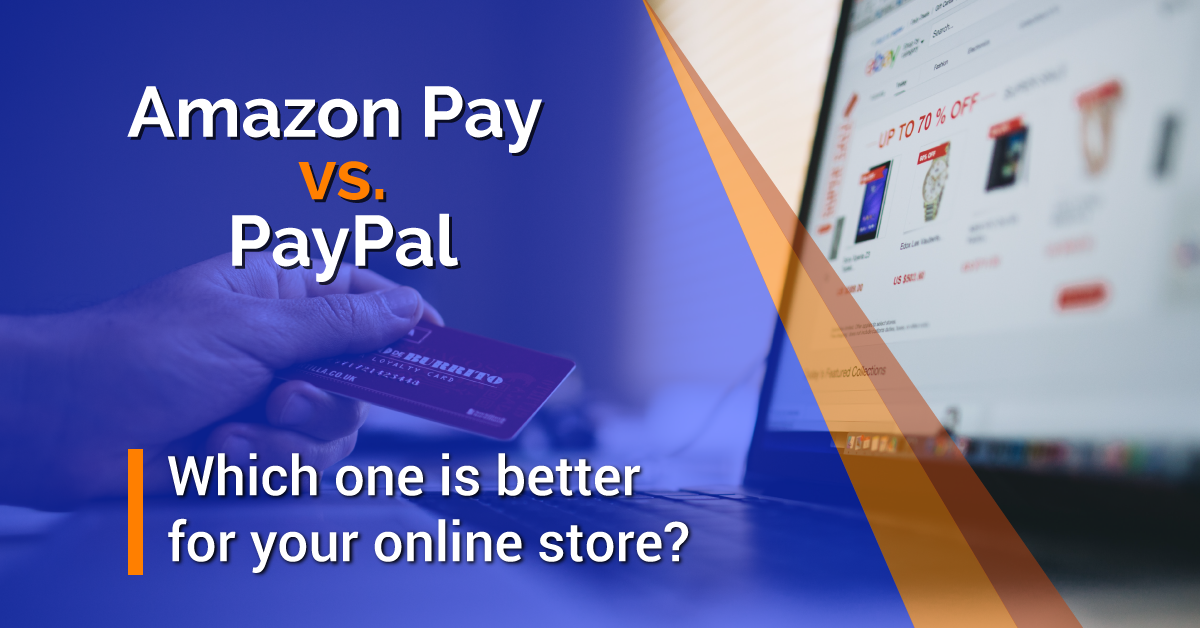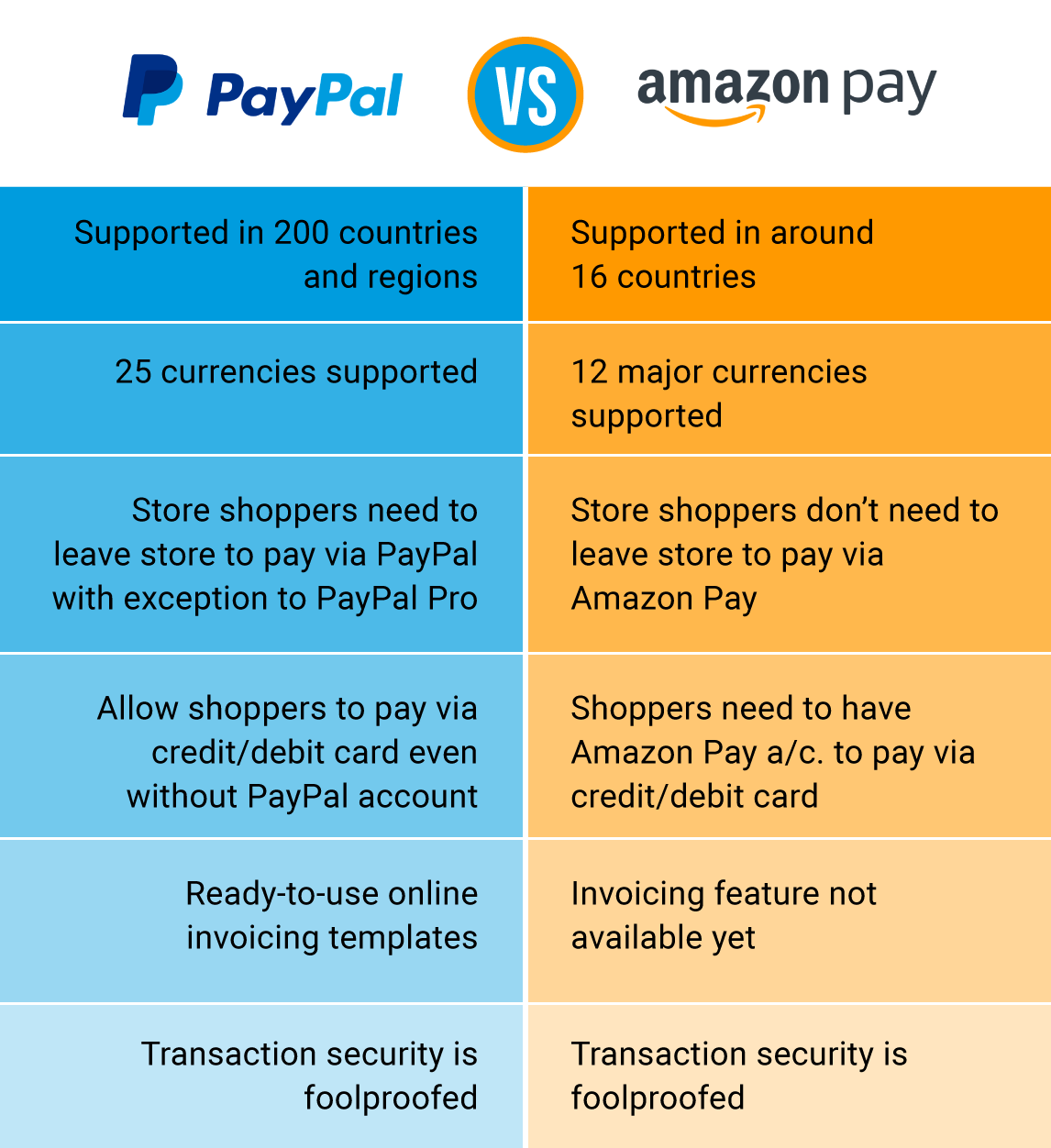Are you planning to start an online business or running a store already? You’ve got top two choices for online payment solutions. One is Amazon Pay and the other is PayPal.
In this article, I’ll discuss to show you a comparative overview of both of these solutions, so you can decide wisely which one of them can be more suitable for you.
Price:
Though both of these solutions don’t have any startup costs, one has to pay a monthly fee to use premium version of PayPal, such as PayPal Payments Pro or PayFlow Pro. Users are charged when a transaction is completed on their sites through the gateways. Note that transaction fees vary by country.
PayPal:
While in the U.S., one has to pay 2.9% plus $0.30 per transaction. In outside countries of the U.S., the transaction fees tend to vary from approximately 3 to 4.5% of the amount and a fixed fee based on the currency. For micropayments, the transaction charges even go higher. Transactions under $12.00, the charges go between 5% to 6% plus a fixed fee based on the currency per transaction.
Amazon Pay:
Amazon payment gateway charges 2.9% plus $0.30 per transaction for domestic U.S. transactions. Tax is chargeable where applicable. For cross-border transactions, those are subject to an additional fee of 3.9%.
Benefits of PayPal and Amazon Pay:
- Support for CurrenciesPayPal is supported in more than 200 countries and regions. It supports 25 currencies. Amazon Pay, on the other hand, is available only ‘for merchants with a place of establishment in around 16 countries.’ Amazon Pay supports approximately 12 major currencies.
- Checkout ProcessBy using PayPal, shoppers are taken to checkout-end through the PayPal site, which means stores don’t have full control of the checkout process. Amazon Pay, on the other hand, does not require shoppers to leave the store to pay via Amazon Pay. Checkout experience is, therefore, better with Amazon Pay, which PayPal pro versions can also provide.
- PaymentsTo make a payment via credit card on Amazon Pay, you have to have an Amazon account. While on PayPal, you don’t have to have a PayPal account. Amazon accepts all major credit and debit cards when it comes to payment forms. PayPal also accepts all major credit cards and also bank accounts, eChecks and PayPal balance.
- Online InvoicingPayPal relieves users from maintaining transaction invoices. PayPal users get ready-to-use online invoicing templates. No monthly fees or setup charges or cancellation charges are required to create or send online invoices. Only at the point of receiving payment online, charges are required. On the other side, Amazon Pay isn’t yet said to be providing any such feature.
- SecuritySecurity is fool-proofed in both of these payment gateway platforms. However, there are several instances when even a slightest suspicion can lead to locking of the PayPal account. There are chargeback options in PayPal that customers can enjoy by lodging complaint as a seller. PayPal can also hold payments up to 21 days as a result of any issue with your transaction.
Installation
Installation of PayPal payment gateway is the easiest job while installation of Amazon Pay payment gateway may require a sort of programming knowledge unless you’ve good integration plugins.
Support
To get support from Amazon Pay, you need to first raise your query via a quick web form. Their support team will contact you via email, chat or call as per your preference. PayPal also provides free phone support to merchants, besides offering virtual assistant.
Wrap-Up
Both PayPal and Amazon Pay have an easy way to get paid and offer shoppers an easy way to send a payment. Now, the selection is entirely on your preference. It is actually dependent on your business location and the markets you want to focus globally. As none of the payment gateways are ‘mutually exclusive’, storeowners are advised to integrate multiple payment options.
In order to run a successful online business, having multiple payment gateway services is strongly recommended. It gives customers more than one payment option and satisfactory payment experience. Note that “lack of enough payment options” and “too complex or long checkout process” can be detrimental for your online business. So, use more than one payment gateways on your ecommerce store, which you should clarify at the beginning of your ecommerce website development.
Please share your thoughts and let us know what other payment gateways you’d like to recommend.
Contact us for Amazon Pay integration with your Shopify store, Magento, NopCommece, CS-Cart, Prestashop, Ecommerce store development.


